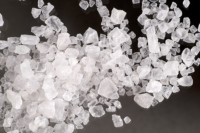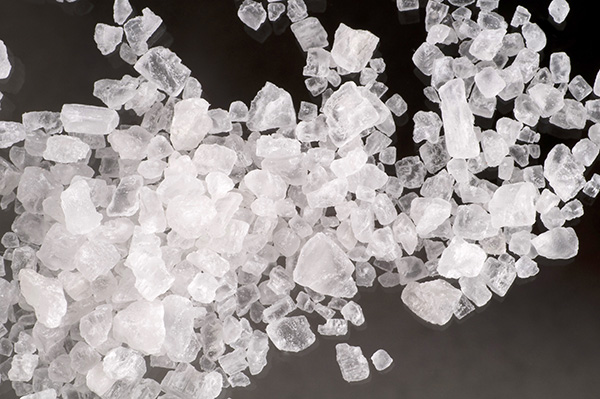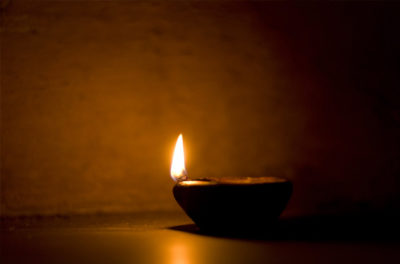Do you ever wonder where in the body the soul resides? Where is the soul’s location in the body? Does it exist in one specific spot or is it spread throughout the body?
Firstly, how can you say that I (soul) am different from my body?
You are not the body because if you are the body, you would not say ‘my body’, ‘my hand’, ‘my heart’ etc. The ‘my’, the ‘I’ refers to the soul i.e. you.
A person is declared dead when the soul leaves the body. After death, even though everyone can see the body, people say ‘he is gone’. Who is he that is now gone? He is the soul who left one body and moved to another.
e:sha hi anu hu a:thma
a soul is subtle, the size of an anu too minute to be visible
If the soul is too minute for the eye to see, why do I need to know about it?
We ‘think’ we care only visible objects. Truly, we care for what is invisible too. For example hunger and desire. Both are invisible but felt. So, ‘visibility’ does not determine a substance’s value. Eternity determines value. The soul is essentially a never-changing entity. Whereas the body made of prakruthi, nature, is an ever-changing entity.
The knowledge that you (soul) are an eternally never-changing entity keeps you in a stable state. Whereas not knowing this keeps you in a state of flux because you ONLY associate with the ever-changing body.
Why is the soul not seen through any medical equipment?
A soul cannot be seen via X-ray, CT scan, or other diagnostic methods because it is not made of any material from prakruthi, nature such as earth, air, water, space, or fire.
What is the soul made of?
The soul is made of jna:na, knowledge. It is knowledge and it is made of knowledge. It is knowledge (guni) and it has a quality of being knowledgeable (gunam).
It is defined as ‘jna:naika:ra’, the form of knowledge. It is also ‘jna:na swaru:pa’, it is knowledge.
How can one be something and be made of the same thing?

How can one be something and be made of the same thing?

For example, sugar crystal. It is made of a sweet substance and it is sweet. Similarly, salt crystal. It is salty and it is salt. However, these two examples can help one understand this specific aspect of soul but not in every aspect. Sugar or salt crystals diminish when used. Whereas the soul, made of knowledge, does not diminish when put in use.
Where in the body does the soul exist?
It exists in the manas (not the physical organ ‘heart’, but an invisible entity responsible for directing senses and accordingly the body) and spreads throughout the body.
For example a di:ya or Sun. There is a solid stable part of light at the central spot and that same light spreads to a broader extent. Similarly, a soul is made of knowledge that exists in a stable solid-state called dharmi bhu:tha jna:nam in one spot in the body, the manas. Additionally, it spreads from that spot to the rest of the body called dharma bhu:tha jna:nam.
Why do souls exist in these bodies?
Each soul exists in a specific body, given a chance to clear its respective ka:rmic records inhibiting its true nature. These records contaminate its knowledge.
These souls are given opportunities to become blemish-free and enjoy a divine blissful state,similar to God’s.
How does the knowledge of the soul get contaminated?
When the soul (you) thinks of the body’s attributes and qualities to be his, the knowledge about the self gets contaminated.
For example: If you feel like the colour or shape of your body, your caste which has been attributed to the body being born in a certain family, the accolades and merits of knowledge that you acquired about the physical world, the young and dynamic age determining ‘you’, or ‘your’ family, friends and possessions, then you are defining yourself with the attributes of the body. The body and these characteristics are given to you for a purpose, but they are not you. When this confusion of who you are happening, that is when the soul’s knowledge gets contaminated.
The contamination happens to the dharma bhu:tha jna:nam (form of knowledge that spreads) not to the dharmi bhu:tha jna:nam (solid stable form of knowledge). This contamination is called mo:hakalikam, the colours of nature making you feel that you are it.
How do these colours, the mo:hakalilam impact me?

A glass that is painted red can deceive others that its contents are also red. Similarly, the soul is enclosed in the manas that has various records of past karma resulting from ignorance of inherent knowledge.
As long as the manas remains unclean with these colours, we cannot exercise jna:na in its clean form. When the manas is clear, transparent with no ‘colours’, jna:na then shines through the manas, senses and the body in its authentic form. The soul can then exercise clean thought and action, benefiting himself and others.
mana e:va manushya:na:m ka:ranam bandha mo:kshayo:h
How can I stop my knowledge from being contaminated?
It begins by trying to wipe off the ignorance about: what you are and what you are not. This is possible with knowledge from listening to Elders, the wise who speak of God and His ways, you, your form and your goal, nature and its attributes. You will then operate your knowledge through clean manas for the right purpose without being impacted by ‘colorful dust’. Sticking to this process is not easy, but God-blessed determination makes it possible.
nischala, state of knowledge that remains stable until challenged by someone
achala, state of knowledge that is stable and firm, uninfluenced and unshaken
such nischala and achala knowledge, buddhi, should begin filling the manas also called sama:dhi; this process begins with listening to Elders’ words as they are My own.
– From the discourse of HH Chinna Jeeyar Swamiji
TV9 6:15 to 6:30am IST, Devaragam Githasaram
June 29th to July 1 st
[Soon to be released on JET WORLD YouTube channel
Subscribe for updates]






Thanks for capturing details and sharing
Jai Sriman Narayana, thanks a lot for deeper understanding about soul.
Pranams swamiji..we r blessed to know this knowledge of aatma…the awareness is coming whenever the mind is takeover the opportunity…praying God to make to realise n release from this self-image…
Jai Sriman Narayana, adiyen dasi
Clean, very lucid and clear description on the nature of the athma. Just reading this starts cleaning the manas. So happy to read.
JAI SRI MANNARAYANA: ADIYEN DASI.
Jai Srimannarayana, Special mention and thanks to the web team for presenting with very apt pictures to the context.
Namaskaram guruji
Jsmn, A crisp understanding of what is soul and relationship with body given in an elegant way.
Sir keep writing divine speech s like this which cherishes our lives show us paths to live SON mallapragada Ravi Sudhakar
Jai srimannarayana.
Namaste Guruji,
Thank you for the clear information regarding soul. We can understand that some thing is driving our thoughts, actions and as explained by you we can associate that knowledge power with soul.
What happens to all this knowledge and soul after death ?
Please kindly explain further.
Thank you Guruji.
Katyayani
Jai Srimannarayana,
You can go through the excerpt of HH’s message about soul after death in the following divine dose article: https://chinnajeeyar.org/the-three-paths/
We hope you enjoy it and share the wisdom with all.